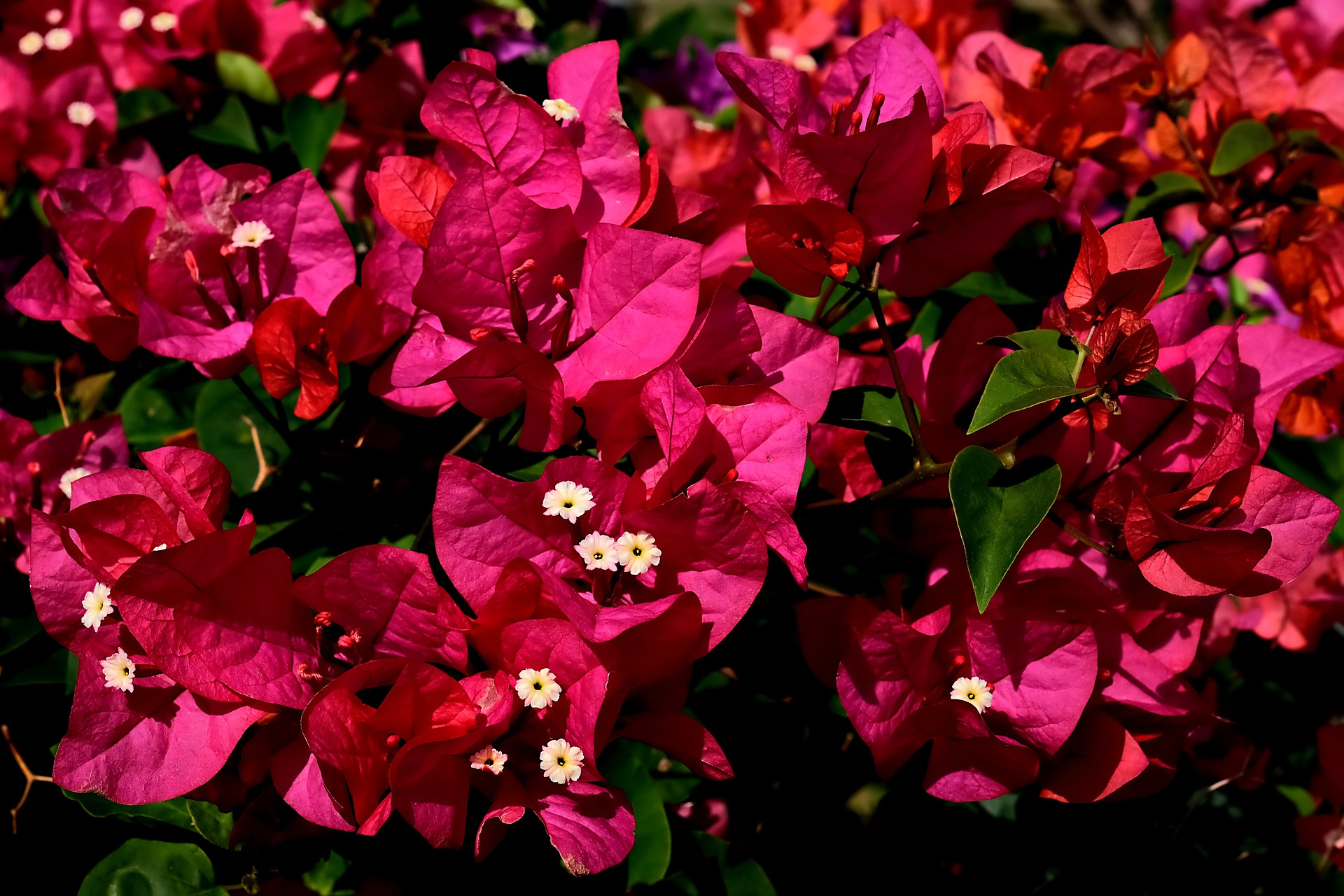A tropical vining plant, bougainvilleas catch your eye with cascades of colorful blossoms, often along walls, fences, and trellises. Sun-loving and drought-resistant, bougainvilleas are tough, rigorous, and easy to grow. Learn how to plant, grow, and care for bougainvilleas.
About Bougainvilleas
These tropical woody vines are evergreen and native to Central and South America. Bougainvilleas are perennial in USDA Hardiness Zones 9 to 11. In colder regions, however, they can be grown as annuals in hanging baskets or planters. The plant simply need enough space to spread out as they produce vines up to 40-feet-long. For containers, there are dwarf varieties 3- to 6-feet long.
Pronounced “boo-gun-VILL-ee-uh,” Bougainvillea glabra and Bougainvillea spectabilis are the two most common species grown ornamentally in the U.S. A tropical woody vine, this woody climber is usually spread its vines off the ground on a wall or trellis, but also it can be pruned as a shrub or it can be grown as a shrub, planted in rows as a hedge. The west side of a garage or house, a full-sun patio or deck, or next to the hot driveway are all perfect spots for this climbing vine.
Fast-growing and lush, they have been a common landscaping plant throughout the warmer areas at resorts and cottages, creating that tropical vibe of vegetation and color. Heat and sun lovers, bougainvilleas are perfect for adding color to areas that are so hot and dry other plants struggle.
Interesting, their colorful displays are not actual flowers but modified leaves called bracts, much like a poinsettia. Three to six bracts surround the actual flowers, which are small, tubular, usually white, and found in groups of three. They’re often pink but also comes in shades of red, magenta, orange, yellow, and even white.
Bougainvilleas may flower almost year-round when planted outside in their native warm climates. Those moved indoors for the winter may eventually stop flowering due to lack of light but will resume again after moving outdoors in the spring. Check these tips if your bougainvillea won’t bloom.













